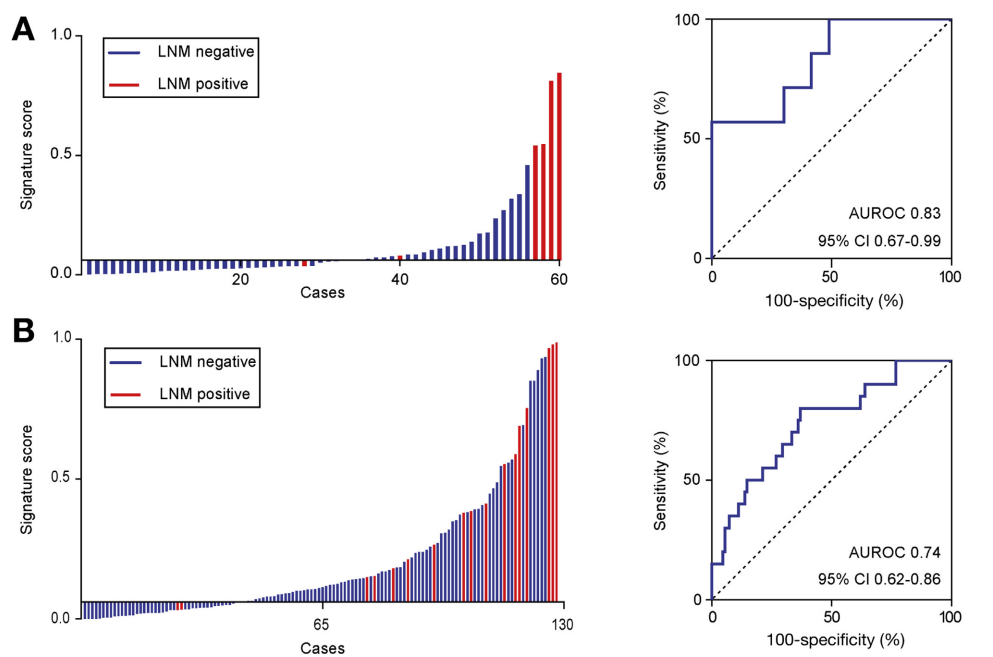May 3046, 30118

Authors
Ozawa T†, Kandimalla R†, Gao F†, Nozawa H, Hata K, Nagata H, Okada S, Izumi D, Baba H, Fleshman J, Wang X, Watanabe T, Goel A.
Gastroenterology 2017
Abstract
Most T1 colorectal cancers treated by radical surgery can now be cured by endoscopic submucosal dissection. Although 70%-80% of T1 colorectal cancers are classified as high risk, <16% of these patients actually have lymph node metastases. Biomarkers are needed to identify patients with T1 cancers with the highest risk of metastasis, to prevent unnecessary radical surgery. We collected data from The Cancer Genome Atlas and identified 5 microRNAs (MIR32, MIR181B, MIR193B, MIR195, and MIR411) with significant changes in expression in T1 and T2 colorectal cancers with vs without lymph node metastases.
Levels of the 5 microRNAs identified patients with lymph node invasion by T1 or T2 cancers with an area under the receiver operating characteristic curve (AUROC) value of 0.84. We validated these findings in 2 cohorts of patients with T1 cancers, using findings from histology as the reference. The 5-microRNA signature identified T1 cancers with lymph node invasion in cohort 1 with an AUROC value of 0.83, and in cohort 2 with an AUROC value of 0.74. When we analyzed biopsy samples from untreated patients, the 5-microRNA signature identified cancers with lymph node metastases with an AUROC value of 0.77. The 5-microRNA therefore identifies high-risk T1 colorectal cancers with a greater degree of accuracy than currently used pathologic features.
Keywords
CRC; Colon Cancer; Colorectal Cancer; Stratification

